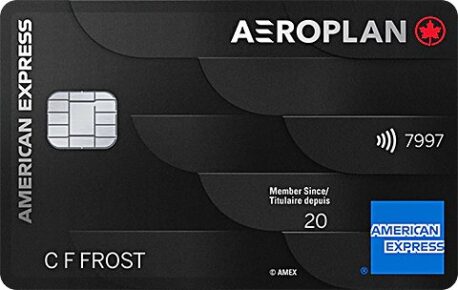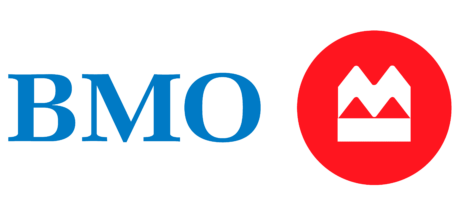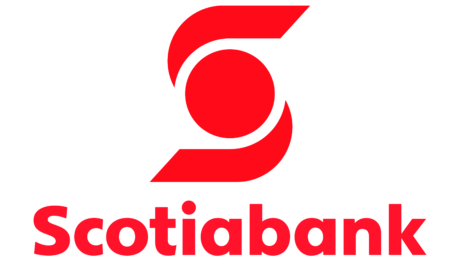Nerdy Insight: The Bank of Canada held its overnight rate at 5% on October 25, which means no further upward pressure on variable mortgage rates. But with Canada’s short-term economic future still question, government bond yields are elevated. As a result, higher fixed mortgage rates have been challenging home buyers throughout October.
Mortgage Type
Property Value
Mortgage Balance
Rate Type
Province
Mortgage Term
Lender |
Lender Highlights |
Rate |
Payment |
Term |
|
|---|---|---|---|---|---|

MCAP |
|
5.44%
Fixed |
$2,442
Monthly |
4 yrs.
Term |
Explore Now |

MCAP |
|
5.44%
Fixed |
$2,442
Monthly |
5 yrs.
Term |
Explore Now |

MCAN |
|
5.79%
Fixed |
$2,526
Monthly |
3 yrs.
Term |
Explore Now |

Radius Financial |
|
6.10%
Variable |
$2,602
Monthly |
3 yrs.
Term |
Explore Now |

Equitable Bank |
|
6.10%
Variable |
$2,602
Monthly |
5 yrs.
Term |
Explore Now |

B2B |
|
6.79%
Fixed |
$2,774
Monthly |
1 yrs.
Term |
Explore Now |
Disclaimer: These rates do not include taxes, fees, and insurance. Your actual rate and loan terms will be determined by the partner’s assessment of your creditworthiness and other factors. Any potential savings figures are estimates based on the information provided by you and our advertising partners. Mortgage Brokerage Licensed in ON #12984, BC #X301004, MB and AB. Homewise can pursue mortgage brokering activity in SK, NL, NS and NB.
Data source:

Current mortgage rates from Canada’s Big Six banks
Current posted mortgage rates
Rates updated: November 11, 2023
Bank |
1-Yr Fixed Rate |
3-Yr Fixed Rate |
5-Yr Fixed Rate |
5-Yr Variable Rate (Closed) |
5-Yr Variable Rate (Open) |
|---|---|---|---|---|---|
| 8.09% | 7.25% | 7.09% | 7.20% | 8.90% | |
| 7.69% | 7.24% | 7.09% | 7.20% | 10.50% | |
| 7.89% | 7.14% | 7.04% | 7.20% | N/A | |
| 8.09% | 7.30% | 7.14% | 7.30% | 10.50% | |
| 8.04% | 7.24% | 7.04% | 7.65% | 10.40% | |
| 7.84% | 7.14% | 7.04% | 7.35% | 8.35% |
Posted rates for closed mortgages with amortization under 25 years. Data source: Canada's major banks
Current prime rates
Prime rate, the rate of interest lenders charge their preferred customers, is typically used to determine variable mortgage rates. If you’ve ever visited a bank’s mortgage rate page, you may have seen its variable mortgage rates explained as “prime minus X%”.
As you’ll see below, the prime rate at all Big Six banks is identical. That’s because each bank bases its prime rate on the Bank of Canada’s overnight lending rate. It’s worth noting, however, that TD is unique among these lenders in that they have their own prime mortgage rate, which is currently 7.35%
| Institution | Prime rate |
|---|---|
| BMO | 7.2% |
| CIBC | 7.2% |
| National Bank | 7.2% |
| Scotiabank | 7.2% |
| RBC | 7.2% |
| TD | 7.2% |
If you’d like to take a closer look at the products and mortgage rates each of the Big Six are offering, we’ve got you covered:
- BMO mortgage rates.
- CIBC mortgage rates.
- National Bank mortgage rates.
- RBC mortgage rates.
- Scotiabank mortgage rates.
- TD mortgage rates.
Current mortgage rate update: November 8, 2023
In the first week of November, three- and five-year government bond yields sank to levels not seen since July. That’s good news for mortgage shoppers, as five-year fixed mortgage rates and three-year fixed mortgage rates typically move in the same direction as bond yields.
This week, lenders were offering five-year fixed rates below 5.6% and three-year fixed rates a little over 6%. Those aren’t ideal options, but they’re better than what was on offer a week ago. Time will tell if the Big Six improve on their current mortgage rates.
Five-year fixed mortgage rates remain the more affordable option, which puts mortgage shoppers in a real bind: A five-year term isn’t terribly attractive if rates are expected decline in the next year or two, but shorter-term options may be too expensive for many borrowers to qualify for.
According to the Bank of Canada, chartered banks’ average posted rate for a one-year, fixed-rate mortgage was an eye-watering 8.09% as of November 1. At an average rate of 7.24%, three-year fixed mortgage rates are more affordable, but they require borrowers to pass the stress test at a brutal 9.14%.
Despite the Bank of Canada holding its overnight rate at 5% on October 25, variable mortgage rates remain unattractive. With inflation ticking down and employment slowing, the Bank’s series of rate hikes may finally be paying dividends. Even if there’s no reason for the Bank to tighten the screws again again, don’t expect a reduction in the overnight rate — or variable mortgage rates — until well into 2024.
The Financial Consumer Agency of Canada recently released a set of new guidelines for the country’s mortgage lenders to follow when dealing with borrowers whose finances have been pushed to the breaking point by higher interest rates. If you’re having trouble making your mortgage payments, or are having to make uncomfortable decisions to stay on top of your mortgage, reach out to your lender or mortgage broker immediately to find out what assistance or payment flexibility might be available to you.

Best mortgage rates
Find the best mortgage rates in Canada.
Compare customized mortgage rates from Canada’s best lenders and brokers for free – all in one place
Current mortgage rate trends in Canada
Rates updated
This chart shows quarterly average conventional lending rates for mortgages, based on weekly posted interest rates offered by the six major chartered banks in Canada.
Data source: Bank of Canada
Current posted mortgage rates | |
|---|---|
| 1-year | N/A |
| 3-year | N/A |
| 5-year | N/A |
Current mortgage rates: Projections for 2023 and 2024
Fixed mortgage rates
Will fixed mortgage rates fall in 2023?
After rising for much of September and October, it’s unlikely that fixed mortgage rates will decline significantly in the last ten weeks of the year.
Three- and five-year government bond yields, which determine fixed three- and five-year fixed mortgage rates, are higher than they’ve been since 2007. So long as these yields stay elevated, which could be the case until interest rates start falling, fixed mortgage rates will remain high.
Will fixed mortgage rates fall in 2024?
Because fixed rates are tied to investor activity in the bond market, they can be tricky to predict over the medium- and long-term. But fixed mortgage rates should soften in 2024. Once interest rates begin trending down and bond prices solidify at lower levels, fixed mortgage rates should also become more affordable.
Variable mortgage rates
Will variable mortgage rates fall in 2023?
After inflation rose in July and August, it became increasingly likely that variable mortgage rates will not decline in 2023.
For variable rates to fall, the Bank of Canada first has to reduce its overnight rate. That won’t happen until the Bank is confident that inflation is trending toward the Bank’s target rate of 2%. Inflation in September was 3.8% — nearly double the bank’s target.
Will variable mortgage rates fall in 2024?
Relief may be coming for variable-rate mortgage holders in 2024. How much relief that might entail, and when it might actually arrive, is the billion-dollar question.
In September, the Bank of Canada shared concerns that inflation might remain high in the short-term, and provided no insight into when inflation might approach its 2% target. If inflation continues to trend lower in the last few months of 2023, a small reduction in the overnight rate could be in the cards for mid-2024.
The Bank isn’t likely to reduce the overnight rate as aggressively as it jacked it up. It will take time for variable mortgage rates to come back to Earth.
Mortgage calculators to assist your home buying journey
Understanding current mortgage rates
What is a mortgage rate?
A mortgage rate is the rate of interest a mortgage lender charges to borrow their money. The mortgage interest rate you’re offered will be a percentage of the principal, or the original amount you borrow.
Because mortgage interest generally compounds over a long period of time, the rate charged has a major effect on the overall cost of a mortgage. Assuming a 20% down payment, a $500,000 mortgage with a rate of 5% interest would result in a total interest charge of $372,407 over the course of 25 years. Knock that rate down to 4%, and the interest would add up to $289,030 — a difference of more than $83,000.
Calculating mortgage interest by hand can be time-consuming. Using a mortgage payment calculator is a quicker way of understanding how much a particular mortgage rate might cost you.
Posted vs. special mortgage rates
If you’re exploring mortgage rates at a large mainstream lender, like a Big Six bank, you might see two different categories of mortgage rates: posted rates and special rates.
Posted rates, a bank’s publicly advertised mortgage rates, will be higher than its special rates. In fact, when you first see posted rates, you might be surprised at how high they are.
Take a look at the current average posted rates at Canada's chartered banks below, according to the Bank of Canada. These rates are for conventional mortgages, which involve a down payment of at least 20%.
| TERM | CONVENTIONAL MORTGAGE RATES |
|---|---|
| 1-year fixed | 8.09% |
| 3-year fixed | 7.24% |
| 5-year fixed | 7.04% |
| Prime rate | 7.20% |
Pretty steep, aren't they? One theory behind why posted rates are so high is that they are intended to be negotiated down during mortgage discussions to make borrowers feel as if they scored a great deal. And if a borrower doesn’t negotiate, the bank can charge the full posted rate and make more money.
Special rates are posted rates that have been discounted. This might be done to create limited- time offers, but some banks’ discounted rates are also the rates they offer their mortgage broker partners.
Nerdy Tip: Make yourself familiar with a bank’s posted and discounted rates to put yourself into a stronger negotiating position. No matter how well you prepare yourself, however, know that the rate you’re offered will ultimately depend on your financial situation.
Mortgage rate types
Fixed mortgage rates
A fixed mortgage rate will not change for the entirety of your mortgage term, which is how long your current mortgage contract is in effect. Even if mortgage rates rise or fall during your term, the rate attached to your mortgage will not change — nor will the principal and interest portions of your mortgage payment.
For example, if you take out a five-year, fixed-rate mortgage at 5% in 2023, your rate won’t change until it’s time to renew your mortgage in 2028. That predictability is one reason why fixed-rate mortgages are so popular in Canada. They’re also widely available at Canadian banks.
A lender’s fixed mortgage rates are based on activity in the government bond market. Fixed rates on one-, three- and five-year mortgages, for example, tend to follow the yields on one-, three- and five-year bonds. If one of those bond yields rises, expect the associated mortgage interest rate to increase, too.
Variable mortgage rates
With a variable mortgage rate, your rate could rise or fall during the mortgage term. That’s because variable mortgage rates are based on lenders’ prime rates, which increase or decrease whenever the Bank of Canada adjusts its overnight rate.
If you take out a variable-rate mortgage and your lender’s prime rate changes, your rate will increase or decrease by the same amount. How that affects your mortgage payment depends on what kind of variable-rate mortgage you have:
- If you have a typical variable- rate mortgage (VRM), the amount of your monthly payment won’t change, but its structure will. When the rate increases, more of your payment will go toward interest; when it decreases, more will go toward the principal.
- If you have an adjustable- rate mortgage (ARM), your actual payment amount will change when your interest rate rises or falls.
The trigger rate
The unpredictability of an ARM might make it seem like the riskier of the two options, but a VRM carries a significant risk of its own. If interest rates rise quickly, your mortgage payment may no longer even cover the monthly interest costs. When this happens, you’ve hit what’s known as the trigger rate.
Once you reach your trigger rate, your bank may require you to either make a lump-sum payment or increase your mortgage payments to ensure you’re at least covering your interest charges. You may also have the option of switching your mortgage to a fixed rate for the rest of your term.
Which is better: fixed or variable?
Choosing between fixed- and variable- rate mortgages is a bit of a gamble no matter what you decide.
With a variable-rate mortgage, you run the risk of watching your rate, and potentially your mortgage payment, balloon to the point where you can no longer afford your home. If rates decline and then stay low, however, you could save a pile of money.
A fixed-rate mortgage provides predictability, and can therefore be easier to budget around. But by committing to a fixed mortgage rate, it’s harder to benefit if rates decrease. To access a lower rate in the middle of your mortgage term, you’d probably have to break your mortgage so you can refinance. That could require paying a steep prepayment penalty.
You’ll generally pay a higher prepayment penalty on a fixed-rate mortgage than on a variable-rate mortgage. Details like this are why you should consult a mortgage professional before making any decisions on how to structure your home loan.
Comparing current mortgage rates
Shop for a mortgage the way you’d search for a new vehicle: you wouldn’t normally buy the first car you see at the first dealership you walk into, and you shouldn’t commit to a mortgage until you’ve compared multiple offers across different lenders.
If you want to compare current mortgage rates from the top lenders and brokers in different provinces, you can consider:
- B.C. mortgage rates.
- Ontario mortgage rates.
- Alberta mortgage rates.
- Manitoba mortgage rates.
- Saskatchewan mortgage rates.
When comparing mortgages, don’t simply look at the current mortgage rates on offer. You have to compare the conditions of the loans you’re investigating, too. Some attractive rate offers, for example, might come with down payment conditions that not all borrowers will be able to meet. Other rates might only apply to term lengths or rate types that don’t align with your homeownership plans.
Compare mortgage rates using APR
Many lenders publish mortgage interest rates alongside corresponding annual percentage rates (APR). An APR includes any additional fees the lender may charge, so it’s a more accurate indication of what a mortgage might cost.
When comparing current mortgage rates among lenders, always try to compare APRs to get a more accurate sense of what each loan might cost you.
Broker vs. bank: Who offers the best current mortgage rates?
When getting a mortgage, you’ll generally have to choose between going directly to a lender, like a bank, or working with a mortgage broker. Deciding between the two might come down to who can score you the best current mortgage rate.
Generally speaking, a mortgage broker should offer you a wider array of options. Unlike a bank’s mortgage advisors, brokers aren’t tied to a single financial institution. They can field offers from multiple lender partners, which might include B lenders and private lenders, in addition to some Big Six banks.
Part of a mortgage broker’s job is to negotiate a better rate for you. They only earn a commission when a mortgage is finalized, so it’s in their best interest to negotiate a mortgage you can afford to sign. Bank employees with revenue targets, however, may not feel quite as motivated to cut you a deal.
Current mortgage rates and the stress test
In addition to affecting the cost of your home loan, current mortgage rates also impact how much mortgage you can qualify for by influencing the mortgage stress test.
If you’re applying for a mortgage at a federally regulated financial institution, the stress test requires you to qualify at either 5.25% or the rate being offered plus 2%, whichever is higher. If a lender offers you a rate of 5%, for example, your finances would have to support the same loan at 7% for you to qualify.
If that’s not the case, your lender will reduce the amount you’re offered until you can pass the stress test at the qualifying rate.
How to get the best mortgage rate
Boost your credit score
A credit score of 680 or higher will help you get approved for a mortgage at most Canadian lenders. The longer the list of lenders willing to work with you, the more mortgage offers you’ll have to choose from. The increased choice gives you a little more control over what your loan will cost — and a better shot at being offered the best mortgage rate.
Before applying for a mortgage or mortgage pre-approval, check your credit score and see where it stands. If there are some financial habits you can tweak to improve your credit score, get tweaking. And if you’re stuck for ideas, reach out to your bank’s financial advisor, a mortgage broker or a credit counsellor to get some ideas from a professional.
If your credit score is below 680, you should still be able to apply for a mortgage with a B lender, but a B lender mortgage might come with significantly higher interest rates.
Pay down debt
Paying down your credit balances can also help reduce the mortgage rate you’re offered.
If you’re carrying significant debt from a credit card, personal loan or line of credit, lenders may have legitimate concerns about your financial decision-making or your ability to also pay for a mortgage. Any risk they see in your debt service ratios or credit history could give them a reason to offer you a higher rate.
Negotiate
Whether you’re dealing with a big bank or small alternative lender, don’t accept the first rate offer you’re presented with.
Negotiating is a must during the mortgage process. Even if your lender isn’t willing to decimate its rate offer for you, getting a little shaved off your rate can make a significant difference.
Here’s a quick example using a home priced at $500,000. We’ll assume a 20% down payment ($100,000), a principal of $400,000 and an amortization period of 25 years.
- At 5% interest, your monthly mortgage payment would be $2,326. The total interest paid at the end of the mortgage would be $297,926.
- At 4.8% interest, your monthly mortgage payment would be $2,281. The total interest paid would be $284,327.
In this case, negotiating that 5% rate offer down by a few percentage points would save you over $13,000.
Frequently asked questions about current mortgage rates
As of October 18, 2023, being offered a 5% mortgage rate would take a miracle. Finding a rate somewhat below 6% on a five-year fixed-rate mortgages is possible, but the rates on shorter-term loans are much higher.
With 2023 almost over and current mortgage rates holding firm at elevated levels, it’s not likely that variable or fixed mortgage rates will decline significantly until well into 2024.
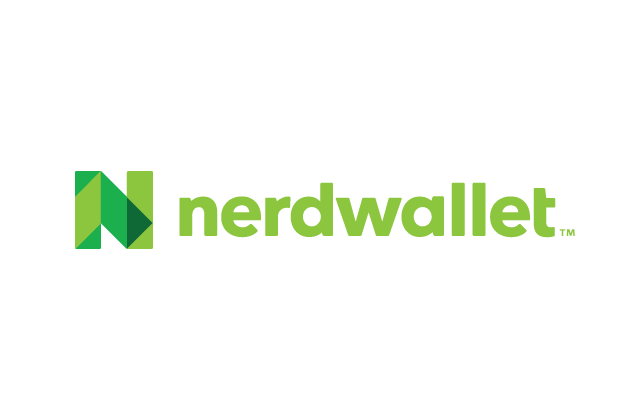
NerdWallet Canada’s Mortgage Reviews
Shopping for a mortgage? We’ve reviewed Big Banks, brokers, B Lenders and online-only lenders — along with some of their most popular products — to help you finance your home purchase, refinance or renewal with confidence.

Find The Best 5-Year Fixed Mortgage Rates In Canada
Compare customized 5-year fixed mortgage rates from Canada’s best lenders and brokers for free. Find the lowest mortgage rate and apply for the home loan that best fits your needs.

Canada Mortgage Amortization Calculator
Use an amortization calculator to project how each future payment will be split between paying interest and paying down the loan principal.
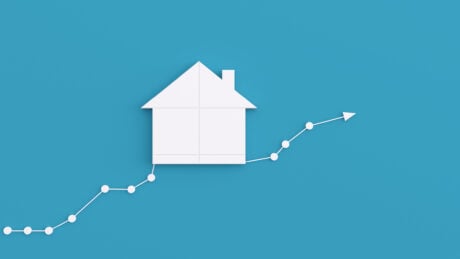
Find the Best 3-Year Fixed Mortgage Rates In Canada
Find the right 3-year fixed mortgage rate for your home buying needs.

